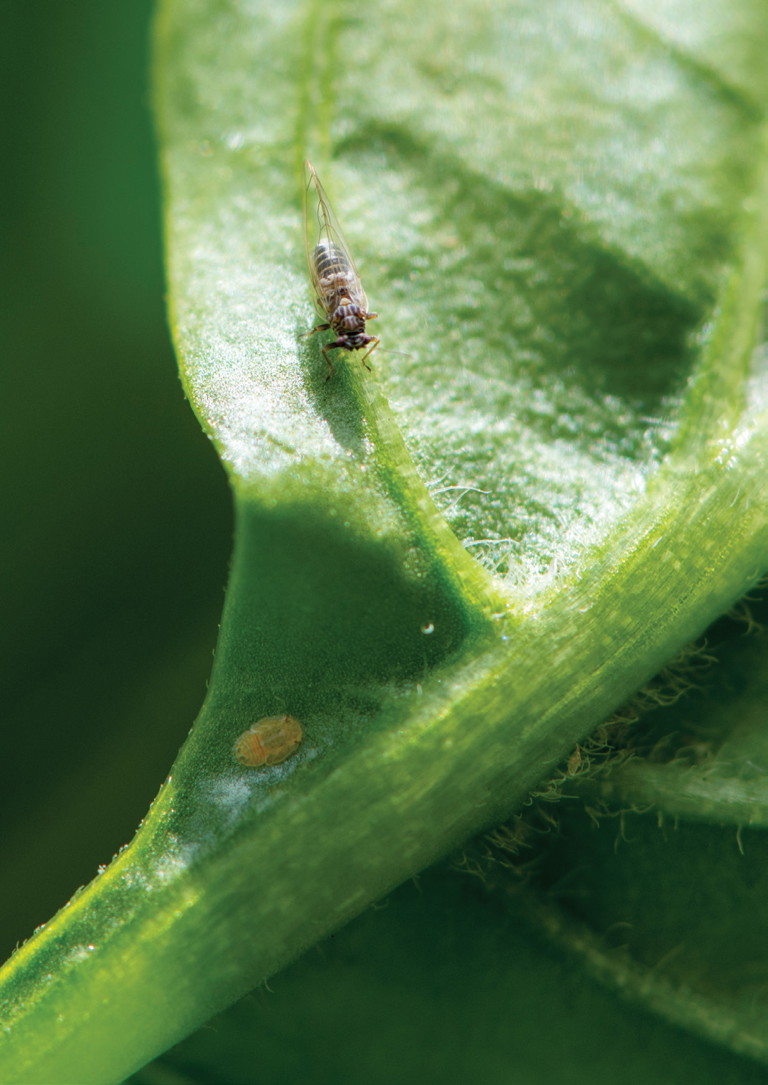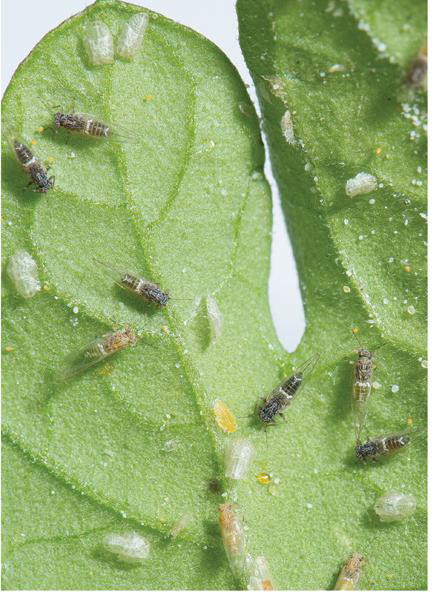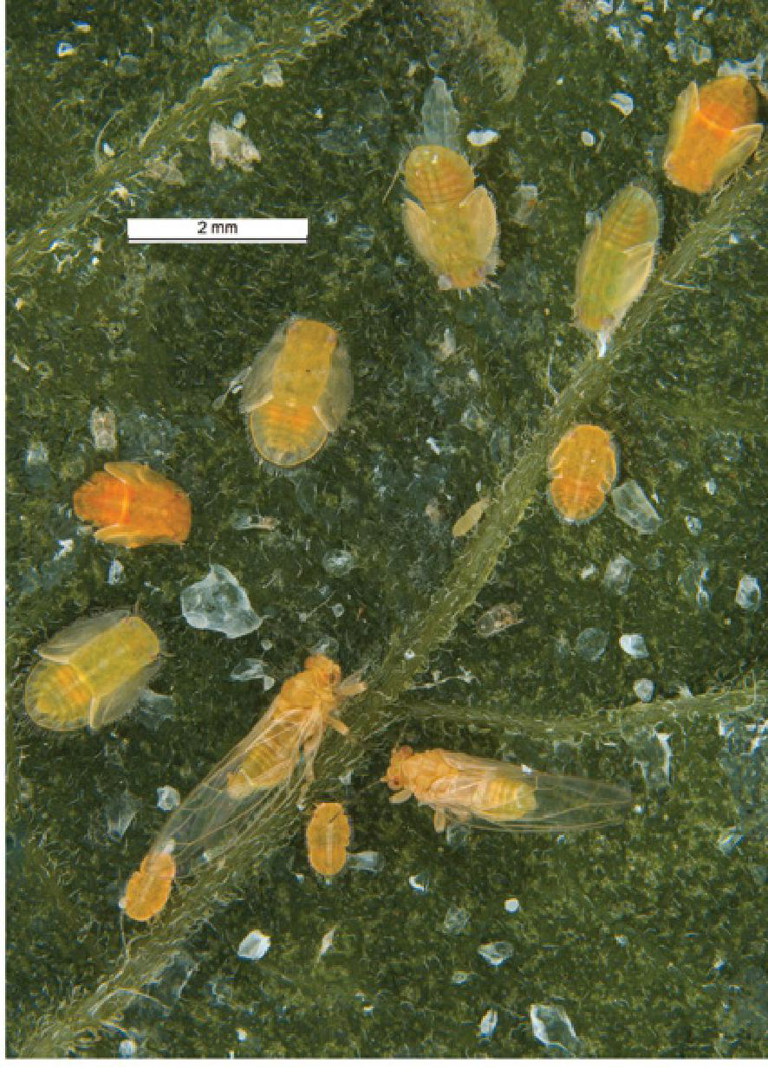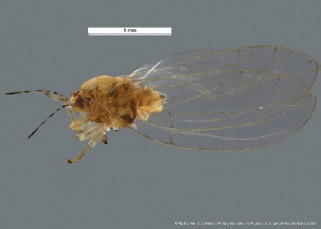
TPP is a phloem-feeding insect that is native to central and North America.
THE first detection of TPP on the Australian mainland occurred in the Perth metropolitan region of WA in February 2017.
Alternative TPP and Medfly disinfestation treatments for WA produce
BY DR VINEETA BILGI, EMMA MANSFIELD, DR SONYA BROUGHTON, DR FRANCIS DE LIMA AND ROHAN PRINCE DEPARTMENT OF PRIMARY INDUSTRIES AND REGIONAL DEVELOPMENT
A two-year research project has identified and verified alternative post-harvest disinfestation treatment doses for host crops of tomato potato psyllid (TPP) and Mediterranean fruit fly (Medfly).
The project focused on the use of low dose methyl bromide (LDMB) fumigation, ethyl formate (EF) and irradiation that could satisfy interstate and international quarantine treatment standards.
The research outcomes pave the way for Western Australia to request consideration from other states for these treatments to be developed into an Interstate Certification Arrangement or Approved Quarantine measure.
The project, Alternative disinfestation for market access for crops affected by tomato potato psyllid (VG17015), was initiated in 2019 by the Department of Primary Industries and Regional Development (DPIRD) in collaboration with vegetablesWA and Hort Innovation.
Since TPP shares some common hosts with Medfly, the research also included identifying treatments that could kill both pests.
Methyl bromide (MB) has been the standard treatment for disinfestation of pests in WA horticultural produce, and is effective against internal and external pests. Low dose methyl bromide (LDMB), ethyl formate (EF) and irradiation offer a number of advantages over MB, however, there has been no available information on effective doses for WA pest populations and produce. Research has only ever been carried out in New Zealand and the United States.
The use of lower concentrations of MB with longer exposure times can reduce environmental impacts, fruit injury, chemical residue, and the associated costs of using MB.
The use of EF is classified as ‘Generally Recognised as Safe (GRAS)’. It is primarily effective on external pests and is often used in disinfesting pests of fresh and dried fruits as well as stored grains.
Irradiation may either completely kill a life-stage or prevent it from further development. Irradiation efficacy is recognised when the emergence of adults or their capacity to reproduce is prevented.
Irradiation may either completely kill a life-stage or prevent it from further development.
Impacts of TPP and Medfly
TPP and Medfly are serious pests and a threat to horticulture production. On the Australian mainland, both TPP and Medfly are established only in WA, and export of WA-produced hosts of TPP and Medfly is subject to treatment, to prevent spread to other States and Territories.
Tomato potato psyllid
TPP (Bactericera cockerelli) was first found in New Zealand in 2006 and on the Australian territory of Norfolk Island in 2015. The first detection of TPP on the Australian mainland occurred in the Perth metropolitan region of WA in February 2017.
TPP is a phloem-feeding insect that is native to central and North America and has a wide host range. Although its true host plants belong to the Solanaceae family including capsicum, chilli, eggplant, tomato and tamarillo, and some Convolvulaceae hosts such as sweet potato.
Damage is caused to plants when adults and immature stages (nymphs) feed on the plant through their long sucking mouth parts, causing yellowing of the foliage. As they feed, TPP secrete sugars called honeydew, which appear as white sugar-like granules that can promote development of black sooty moulds and reduce photosynthesis (Figure 1).
TPP can also damage tomatoes and potatoes by infecting plants with a bacterial disease, Candidatus Liberibacter solanacearum (CLso), also known as zebra chip. So far, this disease has not been found in WA.
FIGURE 1. ADULTS AND NYMPHS OF TOMATO POTATO PSYLLID (BACTERICERA COCKERELLI).
Damage by TPP is caused when adults and immature stages feed on the plant.


Mediterranean fruit fly
Medfly (Ceratitis capitata) is one of the world’s most destructive insect pest species that attacks a wide range of fruits, vegetables and nuts. Medfly is associated with serious economic losses, indirectly affecting market access and trade of horticulture commodities.
Key findings
Low dose methyl bromide fumigation
Medfly eggs were found to be the most tolerant life-stage. Four effective LDMB doses that achieved quarantine standard of probit 9 mortality rates were identified in largescale replicated trials on Medfly eggs in red capsicum (Table 1).
For TPP, two new shorter doses of two hours were identified against all life-stages, i.e. eggs, nymphs, and adults. Both doses satisfied quarantine standards of probit 8.7 or 9 in largescale trials (Table 1).
Fruit injury tests on capsicum, chilli, eggplant and tomato indicated there were no significant differences in fruit quality and appearance when compared to untreated fruit. Fumigated fruit could be stored at 10°C up to 10 days without compromising the quality, except for eggplant which could be stored for up to 7 days.


MEDFLY (Ceratitis capitata) is one of the world’s most destructive insect pest species that attacks a wide range of fruits, vegetables and nuts.
Medfly is associated with serious economic losses in the agriculture sector.
Residue analyses indicated that the residue levels were <0.5mg/kg which is below the permissible limit of 50mg/kg for capsicum, as recognised by Food Standards Australia New Zealand (FSANZ).
Ethyl formate
TPP eggs were found to be the most tolerant life-stage in laboratory trials. A total of 39,464 viable eggs were treated with a dose of 1.25% EF with 15% carbon dioxide for 2h at 10°C. This resulted in complete prevention of egg hatch and yielded quarantine standard of 99.99% level of control at 95% confidence interval in largescale trials.
Microscopic examination indicated that fumigated eggs appeared desiccated in comparison to untreated eggs, which remained healthy (Figure 2).
Fruit injury tests on capsicum and tomato indicated there were no significant differences in physiochemical parameters tested such as weight, hardness, pH or °Brix. Visual observations indicated treated tomato could be stored between 7 and 10 days whereas capsicum could be stored up to 14 days without compromising quality.
Irradiation
For TPP, it was found that radiotolerance increased with age and was greater in late instars. TPP eggs and nymphs were tested against a range of doses from 50 to 350Gy.
Early nymphs irradiated above 100Gy did not survive, whereas with a 50 and 100Gy dose they developed into late instars and died five days post-irradiation. Late nymphs irradiated ≥300Gy did not develop into adults.

PHOTO © DPIRD

FIGURE 2. TPP EGGS FUMIGATED WITH ETHYL FORMATE AND CARBON DIOXIDE (LEFT) VERSUS UNTREATED HEALTHY EGGS (RIGHT)
There were deformities seen in adults that developed from small and large nymphs, with the venation on wings not fully formed or wings were deformed (Figure 3). Abdomen of dead nymphs appeared dark brown.
Appendages of nymphs appeared brownish or burnt, while body appeared pale green or discoloured and dehydrated. Based on these preliminary results it can be speculated that a reference dose of ≥350Gy would be required to achieve mortality of eggs and nymphs.

PHOTO © DPIRD

FIGURE 3. DORSAL AND LATERAL VIEWS OF DEFORMED TOMATO POTATO PSYLLID (BACTERICERA COCKERELLI) POST-IRRADIATION
Conclusions
• LDMB fumigation is an effective method of disinfesting both Medfly and TPP and could be used as a disinfestation treatment for both pests in their common hosts.
• EF in combination with carbon dioxide effectively kills all TPP life-stages, including the mosttolerant egg stage. It may be an alternative to methyl bromide fumigation and is available commercially as Vapormate.
• Both LDMB and EF treatments satisfied quarantine standard of 99.99% level of control, at 95% confidence interval in largescale trials.
• Registration of alternative treatment with regulatory bodies such as the Australian Pesticides and Veterinary Medicines Authority (APVMA) and FSANZ may be explored to facilitate market access of host produce affected by Medfly and TPP.
• So far, an effective irradiation dose for TPP is not known, however, a dose of ≥350Gy would be required to achieve mortality of eggs and nymphs.
MORE INFORMATION
Contact Dr Vineeta Bilgi on (08) 9368 3670, email vineeta.bilgi@dpird.wa.gov.au or go to dpird.wa.gov.au

This project has been funded by Hort Innovation using the vegetable research and development levy and funds from the Australian Government. For more information on the fund and strategic levy investment visit horticulture.com.au